Sancheong-gun (Sancheong County), located in western Gyeongsangnam-do (South Gyeongsang Province), is only home to about 36,000 people. The county is about 39 kilometers from east to west, and about 40 kilometers from north to south, giving it some 795 square kilometers, about the size of Seoul proper. True to its name, Sancheong (산청, 山淸), the region is thick with green mountains and the town itself is surrounded by mountains, making the county a region defined by cleanliness and a distinct lack of pollution.
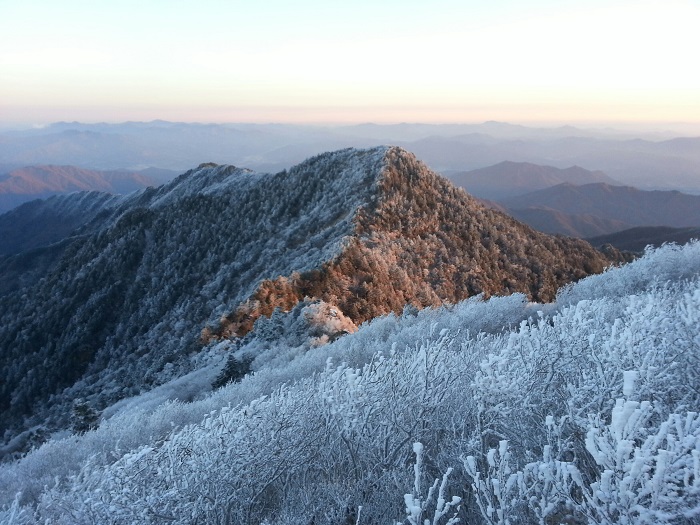
Sancheong forms the eastern and northeastern slopes of Jirisan Mountain. It stretches out from the Sobaeksan Mountains and the Gyeonghogang River flows through it. According to principles of feng shui, a region with the combination of a big mountain and a river is always auspicious and brings positive energy. Many people believe that if you bask in the energy of the mountain, you will be able to pass that test, safely give birth, get promoted and, generally, have at least one of your wishes come true. With that in mind, many local residents recommend that newcomers climb the mountain, and tell tales of people who visited and whose wishes came true.
Jirisan National Park, incorporating the second tallest mountain in South Korea, officially spans across five cities and counties, including Namwon in Jeollabuk-do, Gurye in Jeollanam-do and then Sancheong, Hadong and Hamyang in Gyeongsangnam-do. Stretching some 50 kilometers from east to west, Jirisan Mountain embraces Cheonwangbong Peak, the mountain's highest point at 1,915 meters, as well as the 1,751-meter Banyabong Peak in the central-western park of the park, and the 1,507 meters of Nogodan Peak along the mountain's western edge.
Jirisan Mountain, meaning, "a mountain that can turn a silly person into a wise person," is the backbone of Sancheong County and constitutes an indispensable part of people's lives there. Medicinal plants and herbs scattered across the mountain help people maintain good health. The low air temperature on the mountain allows for the production of delicious strawberries and dried persimmons, two iconic fruits of the county. They are so sweet that some people think they're mixed with sugar.
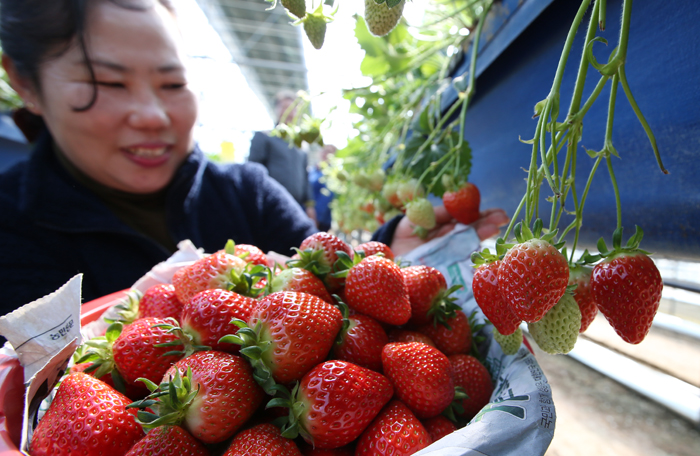
Industry
About 78 percent of the land in Sancheong consists of forests and fields. In addition to rice, the most important crop, the soil is home to barley, beans, wheat, millet, taro, cotton & ramie and apples, pears and persimmons. It's also known for its production of silkworm cocoons. Ginseng, schizandra, angelica root, Paeonia japonica, a perennial, and leaf tobacco are regarded as major local specialties, too. In many outdoor markets, -- in Jangteomok, Danseong, Hwagye, Chahwang, Saengcho, Muntae and Deoksan -- open either permanently or else held regularly, a variety of crops and produce from the mountain are traded in high quantity. Medicinal herbs, seeds and dried persimmons are the most common and highly-demanded commodities.
Sancheong is also known for its great reserves of kaolin, a fine white clay used when making porcelain. The county makes up for half of all the kaolin produced nationwide, alongside nearby Hadong County. Based on the large amount of kaolin produced in the region, the ceramics industry has developed here. Ceramics produced in Saengcho-myeon, so-called Saengcho ceramics, in particular, are a specialty recognized nationwide.
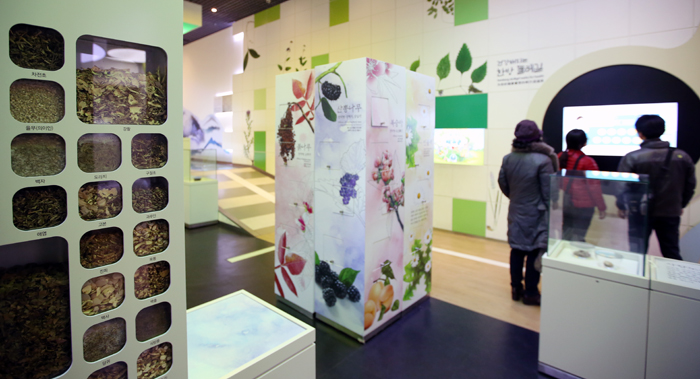
History/ Tourism
Sancheong is also known for being the hometown of Mun Ik-jeom (문익점, 文益漸) (1329-1400), a politician and scholar from late Goryeo times (918-1392). He introduced cottonseed and developed a clothing industry in Korea for the first time. Working as a government officer in Sancheong, in 1363 Mun brought cotton seeds from the Mongolian Yuan Dynasty (1271-1368). In cooperation with Jeong Cheon-ik (정천익, 鄭天益), his father-in-law, Mun succeeded in cultivating cotton and producing textiles, greatly improving the country's attire. There is a museum along Mokhwa-ro in Danseong-myeon where the first cotton seed was planted. It's dedicated to Mun's life and to his endeavors to make a connection between the seed and the clothing industry, with displays of old clothing-making facilities, such as looms and spinning wheels.
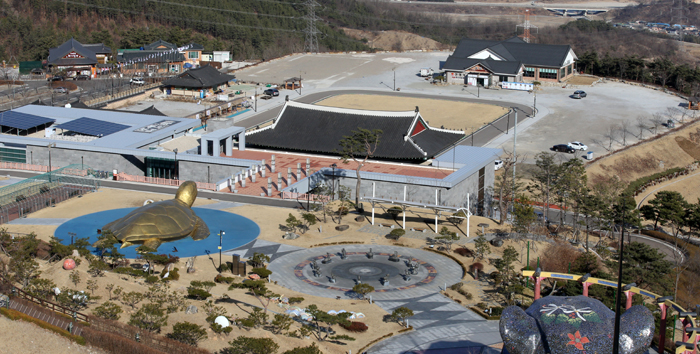
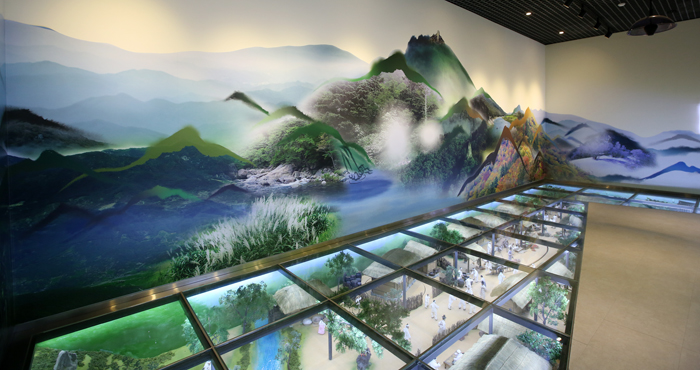
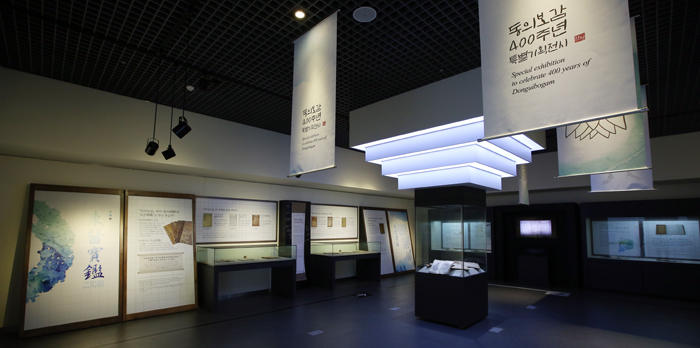
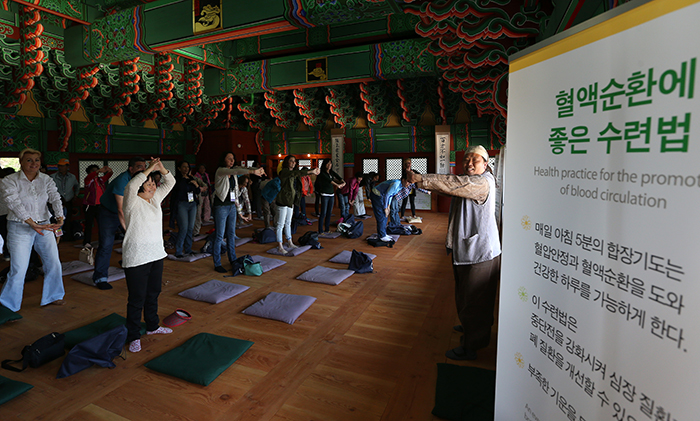
Sancheong is home to more than 1,000 types of medicinal herbs and is regarded as the center of Korea's traditional medicine industry. With such an established industry, Sancheong hosted the World Traditional Medicine Expo in 2013 and holds the Sancheong Medicinal Herb Festival every May. In Donguibogamchon Village, the center of such events, visitors can learn about medicinal herbs and traditional medicine. The village has a variety of facilities, including museums and galleries, all dedicated to such topics. Visitors can also experience first-hand both moxibustion and acupuncture.
The village, covering more than one square kilometer, houses mountainside accommodation facilities, too. Spending a night in either a condominium or a forest lodge, whose walls are surrounded by cypress trees, offers an eye-popping view of the town and a serene, relaxing time.
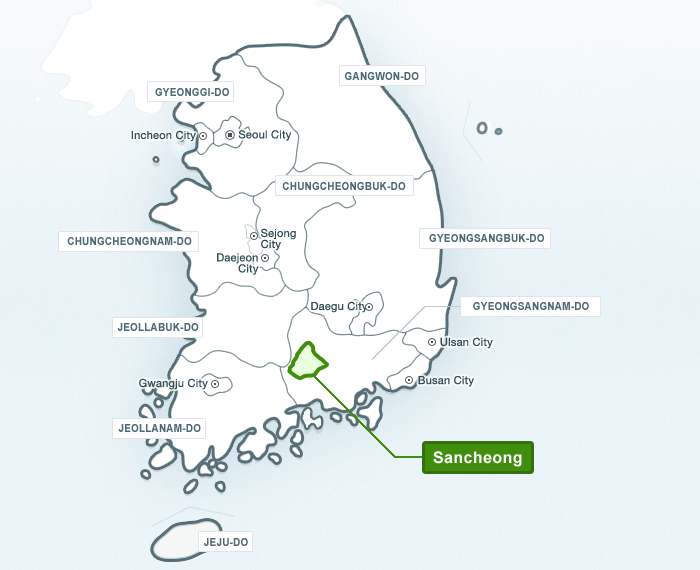
How to get to Sancheong:
-From Seoul to Sancheong, head south toward Daejeon along the Gyeongbu Highway. For bus travelers, get a bus from the Nambu Express Terminal.
-From Busan, please head toward Jinju along the Namhae Highway.
-From Gwangju, head toward Suncheon/ Jinju along the Honam Highway.
By Lee Seung-ah
Photos: Jeon Han
Korea.net Staff Writers
slee27@korea.kr

Cheonwangbong Peak, the highest point on Jirisan Mountain, stands at 1,915 meters. It's covered in snow. Residents of Sancheong County believe that those who bask in the positive energy of the peak have their wishes granted.
Sancheong forms the eastern and northeastern slopes of Jirisan Mountain. It stretches out from the Sobaeksan Mountains and the Gyeonghogang River flows through it. According to principles of feng shui, a region with the combination of a big mountain and a river is always auspicious and brings positive energy. Many people believe that if you bask in the energy of the mountain, you will be able to pass that test, safely give birth, get promoted and, generally, have at least one of your wishes come true. With that in mind, many local residents recommend that newcomers climb the mountain, and tell tales of people who visited and whose wishes came true.
Jirisan National Park, incorporating the second tallest mountain in South Korea, officially spans across five cities and counties, including Namwon in Jeollabuk-do, Gurye in Jeollanam-do and then Sancheong, Hadong and Hamyang in Gyeongsangnam-do. Stretching some 50 kilometers from east to west, Jirisan Mountain embraces Cheonwangbong Peak, the mountain's highest point at 1,915 meters, as well as the 1,751-meter Banyabong Peak in the central-western park of the park, and the 1,507 meters of Nogodan Peak along the mountain's western edge.
Jirisan Mountain, meaning, "a mountain that can turn a silly person into a wise person," is the backbone of Sancheong County and constitutes an indispensable part of people's lives there. Medicinal plants and herbs scattered across the mountain help people maintain good health. The low air temperature on the mountain allows for the production of delicious strawberries and dried persimmons, two iconic fruits of the county. They are so sweet that some people think they're mixed with sugar.

Sancheong strawberries are recognized nationwide for their size and sweetness. Demand is high from urban city dwellers, as well as from abroad.
Industry
About 78 percent of the land in Sancheong consists of forests and fields. In addition to rice, the most important crop, the soil is home to barley, beans, wheat, millet, taro, cotton & ramie and apples, pears and persimmons. It's also known for its production of silkworm cocoons. Ginseng, schizandra, angelica root, Paeonia japonica, a perennial, and leaf tobacco are regarded as major local specialties, too. In many outdoor markets, -- in Jangteomok, Danseong, Hwagye, Chahwang, Saengcho, Muntae and Deoksan -- open either permanently or else held regularly, a variety of crops and produce from the mountain are traded in high quantity. Medicinal herbs, seeds and dried persimmons are the most common and highly-demanded commodities.
Sancheong is also known for its great reserves of kaolin, a fine white clay used when making porcelain. The county makes up for half of all the kaolin produced nationwide, alongside nearby Hadong County. Based on the large amount of kaolin produced in the region, the ceramics industry has developed here. Ceramics produced in Saengcho-myeon, so-called Saengcho ceramics, in particular, are a specialty recognized nationwide.

A wide variety of medicinal herbs are on display in Donguibogamchon Village.
History/ Tourism
Sancheong is also known for being the hometown of Mun Ik-jeom (문익점, 文益漸) (1329-1400), a politician and scholar from late Goryeo times (918-1392). He introduced cottonseed and developed a clothing industry in Korea for the first time. Working as a government officer in Sancheong, in 1363 Mun brought cotton seeds from the Mongolian Yuan Dynasty (1271-1368). In cooperation with Jeong Cheon-ik (정천익, 鄭天益), his father-in-law, Mun succeeded in cultivating cotton and producing textiles, greatly improving the country's attire. There is a museum along Mokhwa-ro in Danseong-myeon where the first cotton seed was planted. It's dedicated to Mun's life and to his endeavors to make a connection between the seed and the clothing industry, with displays of old clothing-making facilities, such as looms and spinning wheels.



Donguibogamchon Village is a cluster of museums, galleries and institutions related to traditional medicine and medicinal plants.

Visitors to Donguibogamchon Village take part in some exercises known to promote blood circulation.
Sancheong is home to more than 1,000 types of medicinal herbs and is regarded as the center of Korea's traditional medicine industry. With such an established industry, Sancheong hosted the World Traditional Medicine Expo in 2013 and holds the Sancheong Medicinal Herb Festival every May. In Donguibogamchon Village, the center of such events, visitors can learn about medicinal herbs and traditional medicine. The village has a variety of facilities, including museums and galleries, all dedicated to such topics. Visitors can also experience first-hand both moxibustion and acupuncture.
The village, covering more than one square kilometer, houses mountainside accommodation facilities, too. Spending a night in either a condominium or a forest lodge, whose walls are surrounded by cypress trees, offers an eye-popping view of the town and a serene, relaxing time.

How to get to Sancheong:
-From Seoul to Sancheong, head south toward Daejeon along the Gyeongbu Highway. For bus travelers, get a bus from the Nambu Express Terminal.
-From Busan, please head toward Jinju along the Namhae Highway.
-From Gwangju, head toward Suncheon/ Jinju along the Honam Highway.
By Lee Seung-ah
Photos: Jeon Han
Korea.net Staff Writers
slee27@korea.kr